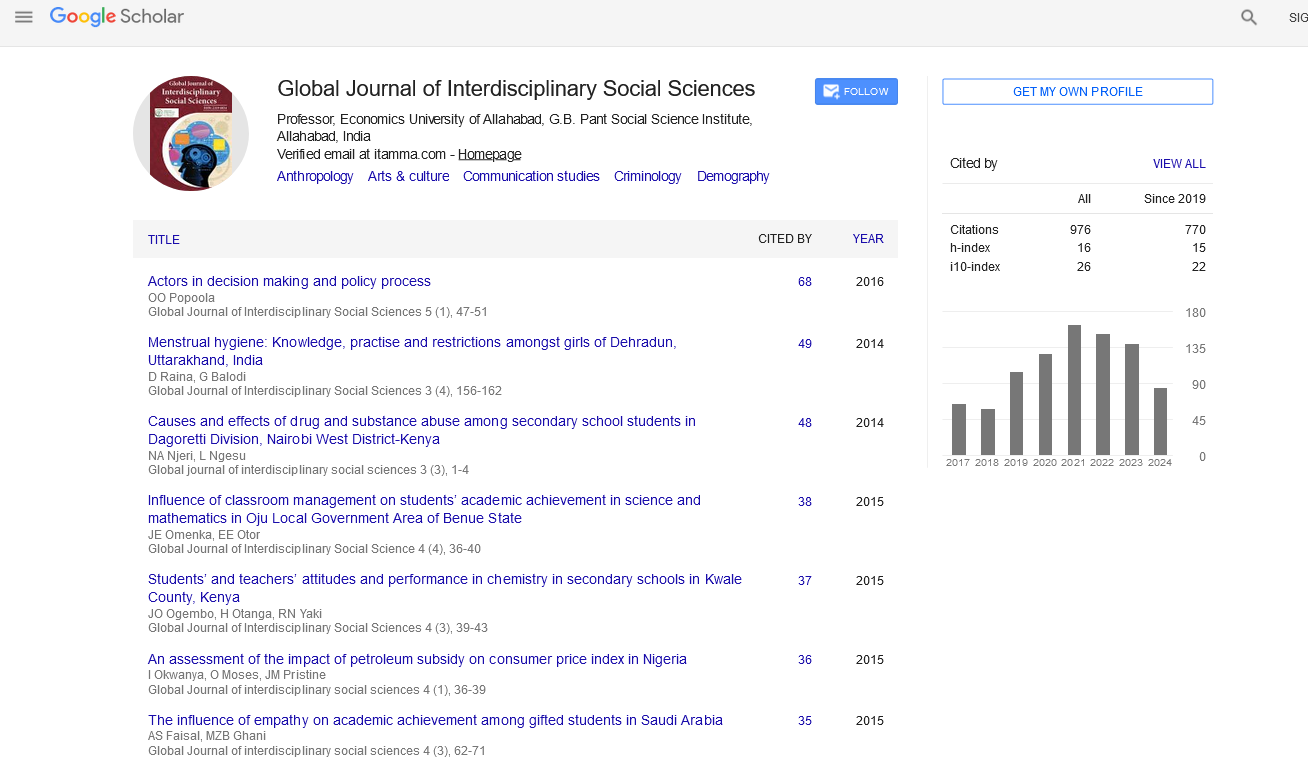Indexed In
- JournalTOCs
- Google Scholar
Useful Links
Share This Page
Journal Flyer

Open Access Journals
- Agri and Aquaculture
- Biochemistry
- Bioinformatics & Systems Biology
- Business & Management
- Chemistry
- Clinical Sciences
- Engineering
- Food & Nutrition
- General Science
- Genetics & Molecular Biology
- Immunology & Microbiology
- Medical Sciences
- Neuroscience & Psychology
- Nursing & Health Care
- Pharmaceutical Sciences
Abstract
Assessment of the Socio-economic Impact of Kashimbilla Multipurpose dam Project in Takum LGA, Taraba State, Nigeria
Oruonye, E.D.
The increasing global demand for energy combined with the quest for clean, renewable energy has placed high demand on hydroelectric power development. Hydroelectric power project often times requires the construction of dam along a river to create reservoir, thereby affecting the flow of the river, altering ecosystems and affecting wildlife and people who depend on those rivers. The construction of hydroelectric dam has an enormous and devastating impact on the environment. This study has examined the socioeconomic impacts of Kashimbilla multipurpose dam. Primary and secondary data were used in this study. The primary data were generated from field observation and interviews, while the secondary data was generated through secondary desk review of existing relevant materials. The study findings show that the Kashimbilla dam is a multipurpose dam that is very unique. It is a buffer dam meant to check the threat of a flood from the weak volcanic Lake Nyos in Cameroon Republic. The dam was also meant to provide water supply of 60,000 cubic metres per day to 400,000 people, hydro power supply of 40 megawatts, irrigations of 2000 hectares, including tourism and fishery which will serve as poverty alleviation measure in the area. Some of the socioeconomic impact of the dam include displacement of several communities and creation of two resettlement camps. The study findings shows that despite the fact that the local communities were not involved in the dam project construction and resettlement, there were no resistance by the local people. Other impacts include loss of farmlands and historical areas used for Takaciyawa festival. It was reported that the dam led to the emergence of some diseases among the people of Jinagbanshin, Lukpo, Shibon Igba and Bariki Lisa as a result of the impoundment of the river. Although the Federal government assured that the Kashimbilla dam project will be commissioned in the first quarter of 2015, this was not possible as a result of the transition to new civilian regime in the country. Work at the project site will be rounded up by October, 2015 and the project site will be closed. The completion and commissioning of the project will depend on the response of the Federal government by way of meeting their financial obligation to the construction firm.

